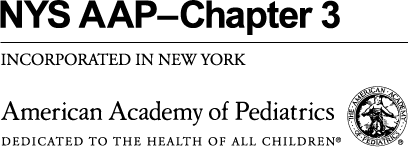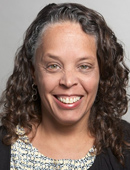Chair of Pediatrics at Maimonides Medical Center in Brooklyn, Dr. Laraque has combined her passions of academic research and community involvement in her long-running advocacy career. Her work as a primary care physician, child abuse pediatrician, and community-based researcher have shaped her understanding of advocacy. Dr. Laraque has worked extensively on a variety of issues with the AAP, especially violence and injury prevention, and has served as Chapter 3 president. She is currently the chair of AAP District II and a member of the AAP Board of Directors.
What does advocacy mean to you?
As a young trainee, I certainly began with a focus on underserved communities, and that was what I wanted to go into medicine for, to eventually practice in an underserved community. Advocacy at every level has been part and parcel of what my career has been about, and as you know it can occur at many different levels. It means individually, if you’re facing a family that doesn’t have access to food, advocacy means, in this case, to begin at the individual level. But for me, it needs to go beyond that, to having the hospital commitment at the highest level of leadership, which I was fortunate in Harlem that there was a consciousness about advocacy, and then extended to the community level, because obviously the problems we were facing were beyond the hospital walls, they were really in the community.
[In child abuse pediatrics,] you have to use your knowledge of medicine to objectively evaluate. So the advocacy there doesn’t come from advocating for a particular outcome, but to objectively evaluate what’s happening to a child, and to put those services in place to be supportive of that child, that family, hopefully the family will be staying intact. And then to look at a systemic level, to see what preventive approaches exist to help avoid the problems we see both in child abuse and in injury. In terms of the word “advocacy,” it means to advocate for the changes needed for sustained preventive measures, and to put effective measures in place when intervention is needed. But I would clarify the term advocacy, because sometimes I think advocacy can be misunderstood.
How has this related to your involvement in the AAP?
My activities with the American Academy of Pediatrics and also the Academic Pediatric Association, early on in my career, was an extension of what I saw happening on the ground as a clinician that needed to extend to the hospital, the community, and certainly to the state and local politics, eventually national politics and globally. So to me, there’s no discontinuity in that thought. It was what I went into medicine for, and I found it impossible to disaggregate advocacy from the work I needed to do on a daily basis.
What are some challenges you have faced throughout your advocacy?
It’s always a balancing act, because medicine is demanding in itself. The other thing for me has been balancing my academic pursuits. I did not want to do this work in the absence of an academic approach–now that’s just personal, it doesn’t need to happen that way. But writing and being involved in clinical research and teaching was really integral. The challenge in that is, I really wanted to blend that with working in underserved areas, which as you can imagine, if an area is resource poor with respect to clinical services, they’re also probably resource poor with respect to funding for scholarly work. However, that can also be a stimulus for good work. I like a challenge, and I like being able to make a difference. But the choices in that can be difficult and challenging. So the way I think of it, it challenges you to continue to write, to continue to apply for grants, to collaborate across disciplines, which I think is really important–we tend to get all hung up in our areas and not talk to each other. That’s intellectual work; it’s really done by people talking to each other and exchanging ideas, and talking to people that you don’t agree with, that you really begin to see the interplay of various ideas and approaches to hopefully get to someplace good.
What have been some of your biggest advocacy successes?
I think I’ve been fortunate in really enjoying what I do. I say every day I’m a lucky woman, because I do what I believe in, and I believe I was well trained to do it, so that’s a good thing. I’m fortunate to be able to do that as a physician; I think it’s an honor to do that. My success stories I think have been my relationships with my families, with the children that I serve and their families. Over the years, I’ve had the pleasure as a primary care physician to follow kids literally prenatally until they went to college. And I think that, for me, was a real success.
What advice do you have for other child advocates?
Stick to it! Advocacy is a tough process, and I think persistence and action is really important. Often it’s a matter of combining the right timing and political will to get to where you need to go. Persistence is really important. Not demagoguery, but persistence–believing in what you think to be right. I think that’s important, that communication about what needs to be done is important to articulate. I think it’s important for us to share our experiences and be able to talk to each other.


